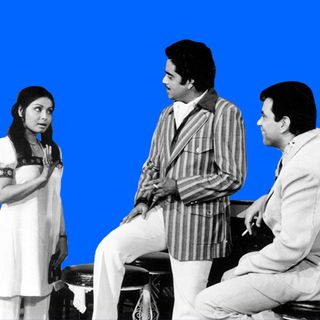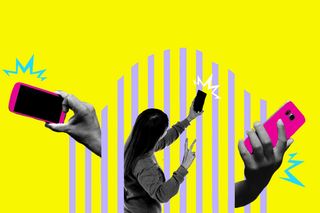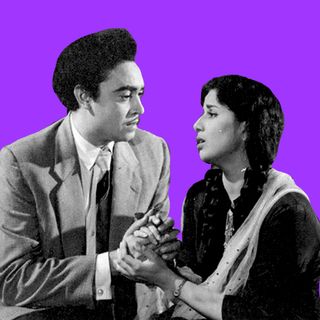
Reclaiming Cringe: Selfies
The essayist Teju Cole called selfies a “visual soliloquy.” In the theater of our lives, selfies are an archive to affirm our existence — and stories.

A series where we discard shame around the objects, activities, and proclivities that others consider deeply uncool.
It may not be all the time, and it may not be often, but let’s be honest — everyone has either cringed about taking a selfie, or at someone else taking a selfie. It’s “the self-portrait of the digital age,” as many have put it — having developed alongside the evolution of personal tech devices, the selfie was first lauded, then denounced as a giveaway sign of “narcissism.” But this criticism levelled against selfies has a gendered slant — usually, women, who use selfies to assert their looks or show themselves off, are dismissed as shallow, vain, and not “intellectual.” It happened no matter what form the selfie took — whether it was the grainy webcam photos in the early aughts, the awkward back-camera ones, the slightly more refined front-camera ones, the Snapchat dog ears filter moment, and finally, the glossy-chic Instagram era of selfies. Now, we even have “meta-selfies” too — or photos of the process of taking a selfie. “If taking a selfie was ever considered “cringe”, the meta-selfie takes that shame and pushes it to the extreme, showing us the BTS mechanics of the act in a contrived act of artful nonchalance,” notes one piece.
Selfies, at one time, were at the crest of the zeitgeist — in 2013, the Oxford English Dictionary named “selfie” the word of the year. As its popularity caught on, selfies became more “massy” — India, for instance, rose to selfie prominence as the country that loves taking them. It was a tool in the hands of millions, who were newly acquainted with the endless possibilities that a camera attached to an essential device could offer. A selfie was an opportunity to mark one’s presence in the world — the cultural equivalent of stone etchings that read “I was here.” It’s why so many have even diedfor the perfect selfie — in a hyper-visible culture of “pics or it didn’t happen,” selfies are a way to document life as it happens.
Perhaps that’s why, when the “cringe-pop” artist Dhinchak Pooja made a song about it, people denounced both the singer and the subject as cringe. Even while it went viral for the wrong reasons, she doubled down on it with a sequel called ‘Ek Or Selfie Lene Do’ and media outlets responded like this: “[F]ive years later, the singer-rapper has come up with a sequel of it and it’s as cringy as one can expect it to be.”
Related on The Swaddle:
Should People Share Covid19 Vaccine Selfies on Social Media?
But this sort of criticism misses the point: selfies pre-empt any judgement. The act of taking one and posting it in public is already testament to the fact that the person is beyond judgement. This makes it more misogynistic, then, when selfies are put down with implied gendered disdain. Women, in particular, reclaiming agency over their image is intolerable to a culture in which images of them are typically owned by someone else, used and exploited without consent.
There was a time, however, when selfies were considered art — it was when they were less accessible. Andy Warhol was one of the first to experiment with it when the Polaroid camera came into existence. The more popular selfies became over time, the more denigrated they were.
Moreover, it’s not just selfies — as photographs themselves got more accessible, they also became a part of mass culture. Like anything, it’s subject to appropriation by capitalism. “Needing to have reality confirmed and experience enhanced by photographs is an aesthetic consumerism to which everyone is now addicted,” Susan Sontag wrote, in her essay on photography. Selfies are also subject to similar tendencies of capital, and now, big tech: our platforms mediate who sees our selfies, and it’s as much an archive for ourselves as it is for advertisers who are served public data. The nature of platforms also determine what kinds of selfies are posted — Facebook is where the DIY, over-filtered and grainy ones from our past go, Instagram is for the angles and lighting-proficient, and Snapchat is for infusing more personality into our memory of ourselves. As the language of selfies evolved, they were all designated cringe after reaching a critical point of popularity. Now all we’re left with is the professional, nearly impossible to achieve selfies that are the exclusive domain of influencers or celebrities. But the disappearance of low-effort, instantaneous selfies undermines the human tendency to want to leave a mark — or several — in the spaces we occupy.
Moreover, selfies can also be subversive. Bathroom selfies were another genre of photographs that most people found cringe — it signified a loner’s existence, with the camera flash adding to the misshapen aesthetic of the average, unedited selfie. But even these were repurposed as subversive forms of protest: trans people began to claim bathroom selfies as a means to protest discriminatory bathroom laws that prevented them from using public bathrooms meant for their gender.
“… they call into question the very idea that photography — and even selfies — are supposed to be about capturing something meaningful and someone special or important,” saidLynn Schofield Clark, Director of the Estlow International Center for Journalism and New Media at the University of Denver. “Selfies like this are about awareness of our own self-awareness. They can create a moment of playfulness that helps us to recognize the truth about living in culture that celebrates the individual and the spectacle,” Clark added. And what can be more important, at the end of the day, than ourselves — and the people we love, who are often included in the frame?
It’s perhaps why essayist Teju Cole called selfies a “visual soliloquy.” In the theater of our lives, replete with pathos, drama, tragedy and romance, selfies are a remarkably versatile medium of documenting it all — and archiving ourselves to affirm we were here.
Rohitha Naraharisetty is a Senior Associate Editor at The Swaddle. She writes about the intersection of gender, caste, social movements, and pop culture. She can be found on Instagram at @rohitha_97 or on Twitter at @romimacaronii.
Related


Is This Normal? ‘I Can’t Do Anything in Moderation’
